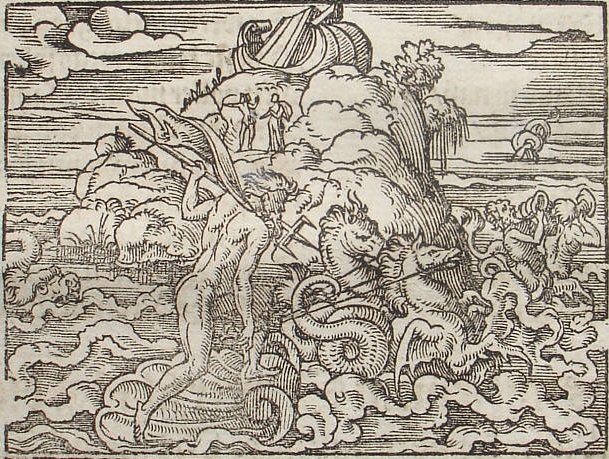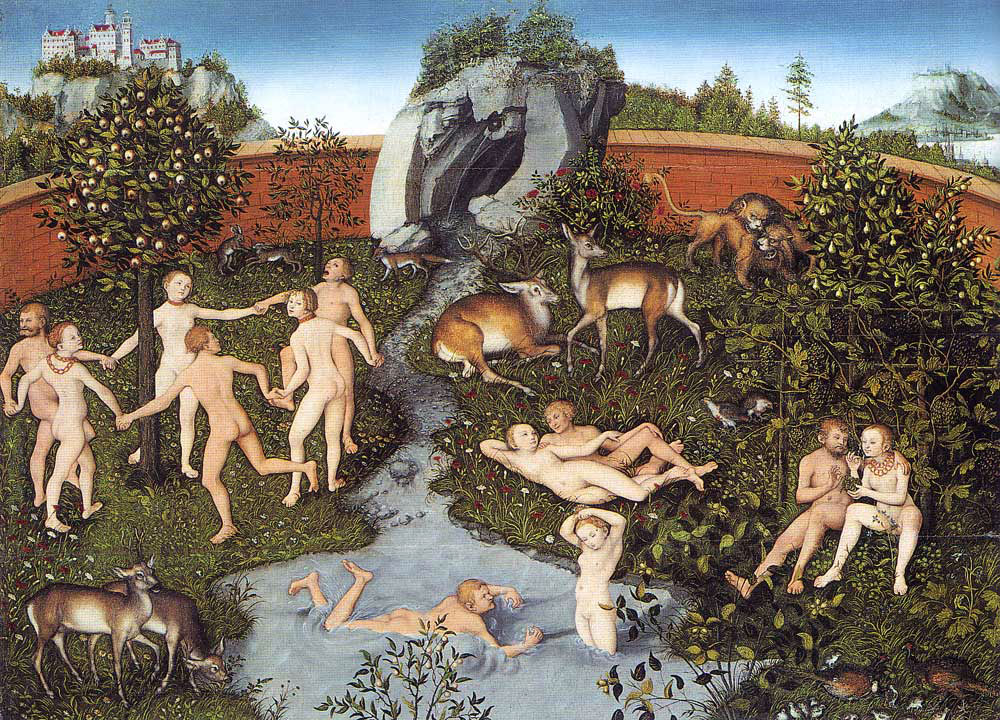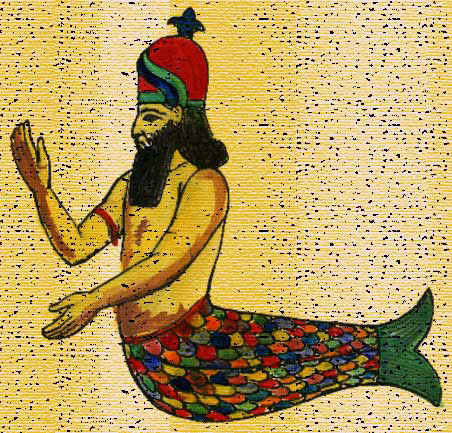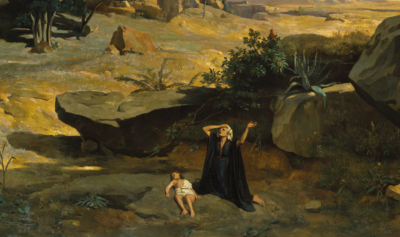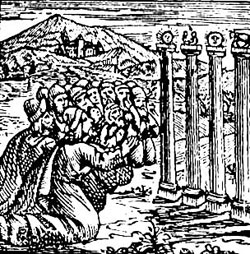Here are some excerpts and notes from various sources regarding a few of the many “myths” of global destruction through the ages, including Ovid’s Ages of Man and Hindu scriptures, pole shifts, and “mythical” doomsday events in North America, Egypt, South America, Australia, and more.
In some of the most powerful and enduring myths that we have inherited from ancient times, our species seems to have retained a confused but resonant memory of a terrifying global catastrophe…. Where do these myths come from? Why, though they derive from unrelated cultures, are their storylines so similar? why are they laden with common symbolism? and why do they so often share the same stock characters and plots? If they are indeed memories, why are there no historical records of the planetary disaster they seem to refer to?
Could it be that the myths themselves are historical records? Could it be that these cunning and immortal stories, composed by anonymous geniuses, were the medium used to record such information and pass it on in the time before history began? —Graham Hancock, Fingerprints of the Gods
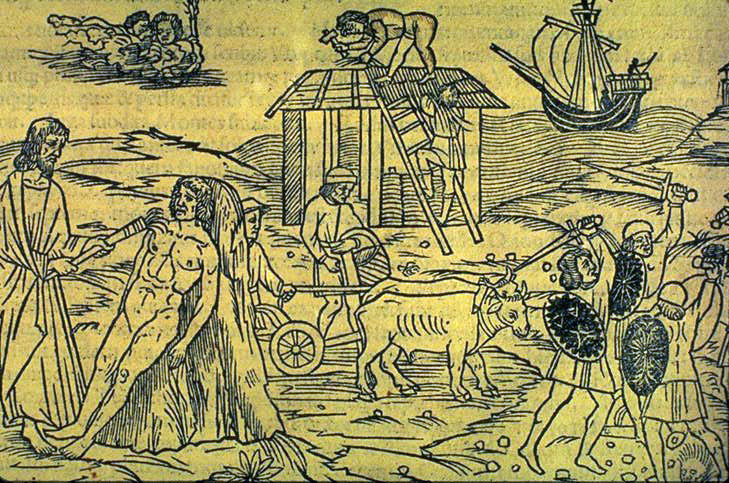
Eschatology (from the Greek meaning “last” and -logy meaning “the study of”, first used in English around 1550) is a part of theology, philosophy, and futurology concerned with what are believed to be the final events of history, the ultimate destiny of humanity — commonly referred to as the end of the world or the “World to Come.”
The Oxford English Dictionary defines eschatology as “concerned with ‘the four last things: death, judgment, heaven, and hell’”.
In the context of mysticism, the phrase refers metaphorically to the end of ordinary reality and reunion with the Divine. In many religions it is taught as an existing future event prophesied in sacred texts or folklore. More broadly, eschatology may encompass related concepts such as the Messiah or Messianic Age, the end time, and the end of days.
History is often seen as being divided into “ages” (Gk. aeons), an age being a period where certain realities are present. An age may come to an end and be replaced by a new age where different realities are present. This transition from one age to another is often the subject of eschatological discussion. So, instead of “the end of the world” we may speak of “the end of the age” and be referring to the end of “life as we know it” and the beginning of a new reality. Indeed, much apocalyptic fiction does not deal with the “end of time” but rather with the end of a certain period of time, the end of life as it is now, and the beginning of a new period of time. It is usually a crisis that brings an end to current reality and ushers in a new way of living / thinking / being. This crisis may take the form of the intervention of a deity in history, a war, a change in the environment or the reaching of a new level of consciousness. If a better world results, we say it is “utopian”. If a worse, it is “dystopian.” Eschatologies vary as to their degree of optimism or pessimism about the future (indeed, the same future may be utopian for some and dystopic for others – “heaven and hell” for example). —From http://en.wikipedia.org/wiki/Eschatology
The Bible…envisages two ages of the world, our own being the second and last [the deluge having ended the first world, and the book of Revelation said to describe the end of the second world]. Elsewhere, in other cultures, different numbers of creations and destructions are recorded. In China, for instance, the perished ages are called kis, ten of which are said to have elapsed from the beginning of time until Confucius. At the end of each kis, “in a general convulsion of nature, the sea is carried out of its bed, mountains spring up out of the ground, rivers change their course, human beings and everything are ruined, and the ancient traces effaced….”
Buddhist scriptures speak of “Seven Suns”, each brought to an end by water, fire or wind. At the end of the Seventh Sun, the current “world cycle”, it is expected that the “earth will break into flames”. Aboriginal traditions of Sarawak and Sabah recall that the sky was once “low” and tell us that “six Suns perished … at present the world is illuminated by the seventh Sun”. Similarly, the Sibylline Books speak of “nine Suns that are nine ages” and prophesy two ages yet to come…. [T]he Hopi Indians of Arizona (who are distant relatives of the Aztecs) record three previous Suns, each culminating in a great annihilation followed by the gradual re-emergence of mankind.—Graham Hancock, Fingerprints of the Gods
According to In Search of the Cradle of Civilization: New Light on Ancient India by Georg Feuerstein, Subhash Kak and David Frawley: “[T]he ancient Hindus regarded the switch of the equinoctial point from one constellation to another (the end of an age) as an alarming event.”
Ages of Man, Ovid, Metamorphoses (Oxford World’s Classics):
Book I:89-112 The Golden Age This was the Golden Age that, without coercion, without laws, spontaneously nurtured the good and the true. There was no fear or punishment: there were no threatening words to be read, fixed in bronze, no crowd of suppliants fearing the judge’s face: they lived safely without protection. No pine tree felled in the mountains had yet reached the flowing waves to travel to other lands: human beings only knew their own shores. There were no steep ditches surrounding towns, no straight war-trumpets, no coiled horns, no swords and helmets. Without the use of armies, people passed their lives in gentle peace and security. The earth herself also, freely, without the scars of ploughs, untouched by hoes, produced everything from herself. Contented with food that grew without cultivation, they collected mountain strawberries and the fruit of the strawberry tree, wild cherries, blackberries clinging to the tough brambles, and acorns fallen from Jupiter’s spreading oak-tree. Spring was eternal, and gentle breezes caressed with warm air the flowers that grew without being seeded. Then the untilled earth gave of its produce and, without needing renewal, the fields whitened with heavy ears of corn. Sometimes rivers of milk flowed, sometimes streams of nectar, and golden honey trickled from the green holm oak.

Book I:113-124 The Silver Age When Saturn was banished to gloomy Tartarus, and Jupiter ruled the world, then came the people of the age of silver that is inferior to gold, more valuable than yellow bronze. Jupiter shortened spring’s first duration and made the year consist of four seasons, winter, summer, changeable autumn, and brief spring. Then parched air first glowed white scorched with the heat, and ice hung down frozen by the wind. Then houses were first made for shelter: before that homes had been made in caves, and dense thickets, or under branches fastened with bark. Then seeds of corn were first buried in the long furrows, and bullocks groaned, burdened under the yoke.
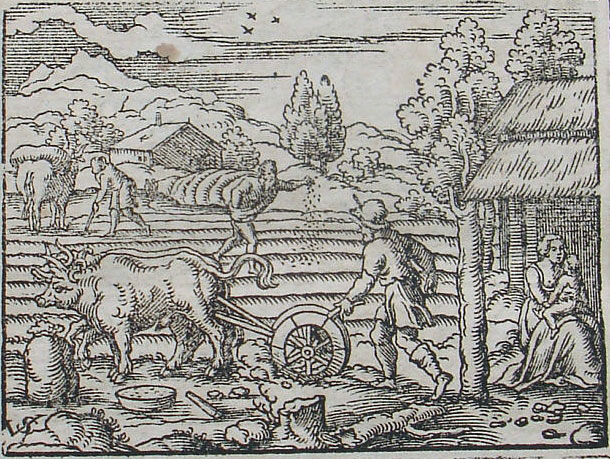
Book I:125-150 The Bronze Age and Iron Age Third came the people of the bronze age, with fiercer natures, readier to indulge in savage warfare, but not yet vicious.
The harsh iron age was last. Immediately every kind of wickedness erupted into this age of baser natures: truth, shame and honour vanished; in their place were fraud, deceit, and trickery, violence and pernicious desires. They set sails to the wind, though as yet the seamen had poor knowledge of their use, and the ships’ keels that once were trees standing amongst high mountains, now leaped through uncharted waves. The land that was once common to all, as the light of the sun is, and the air, was marked out, to its furthest boundaries, by wary surveyors. Not only did they demand the crops and the food the rich soil owed them, but they entered the bowels of the earth, and excavating brought up the wealth it had concealed in Stygian shade, wealth that incites men to crime. And now harmful iron appeared, and gold more harmful than iron. War came, whose struggles employ both, waving clashing arms with bloodstained hands. They lived on plunder: friend was not safe with friend, relative with relative, kindness was rare between brothers. Husbands longed for the death of their wives, wives for the death of their husbands. Murderous stepmothers mixed deadly aconite, and sons inquired into their father’s years before their time. Piety was dead, and virgin Astraea, last of all the immortals to depart, herself abandoned the blood-drenched earth.
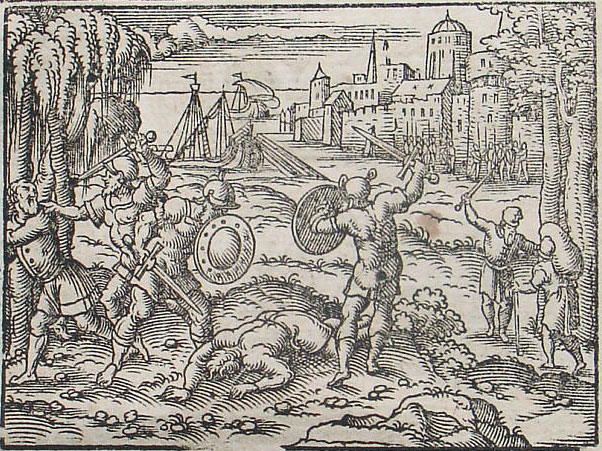
http://www.bible-knowledge.com/new-heaven-and-new-earth/
“Geological evidence found in Ohio and Indiana in recent weeks is strengthening the case to attribute what happened 12,900 years ago in North America — when the end of the last Ice Age unexpectedly turned into a phase of extinction for animals and humans – to a cataclysmic comet or asteroid explosion over top of Canada….”
According to Peter Kolosimo in his book, Timeless Earth, the Harris Egyptian papyrus “speaks of a catastrophe following which ‘south became north…and the earth turned round upon itself’. Herrodotus, moreover, tells us that according to the priests of Thebes (Luxor), ‘twice in past ages the sun used to rise in a different quarter from where it rises now, and twice it was wont to set in the east instead of the west’.” Kolosimo also relates a Toltec legend that the first age was brought to end by floods and lightning; the second age was peopled by giants called Quinametzin, who were mostly destroyed by earthquakes; and the remaining giants were killed by men during the third age, “just as Goliath was slain by David.”
Kolosimo asks:
What force can it have been that wiped out flourishing civilizations at a single blow, decimating the population of the globe and condemning the survivors to take refuge in caves out of which their ancestors had painfully struggled thousands of years before? Clearly the cause must have been some fearful cataclysm affecting the whole of our planet. There is much evidence that catastrophes on this scale did in fact occur.
Although complete carcases and skeletons are sometimes found, the remains usually look as if they had been torn about by some gigantic force. In some places there are heaps of bones as high as a small hill, the remains of mammoths being interspersed with those of horses, antelopes, bison, huge felines, and other smaller animals…. In 1901 a sensation was caused by the discovery of a complete mammal carcase near the Berezovka River, as this animal seemed to have died of cold in midsummer. The contents of its stomach were well preserved and included buttercups and flowering wild beans: this meant that they must have been swallowed about the end of July or beginning of August. The creature had died so suddenly that it still held in its jaws a mouthful of grasses and flowers. It had clearly been caught up by a tremendous force and hurled several miles from its pasture-ground. The pelvis and one leg were fractured — the huge animal had been knocked to its knees and had then frozen to death, at what is normally the hottest time of the year. —Scientist Charles H. Hapgood in Timeless Earth.
Kolosimo notes that, while traditionally science has held that Antarctica has been covered under a mile-thick ice layer for millions of years, there is reason to think the ice cover is much more recent, and related to the most recent worldwide cataclysm:
American scientists fished up from the bed of the Antarctic Ocean specimens of a muddy sediment which showed that in comparatively recent times Antarctic rivers had borne down to the sea the alluvial products of an ice-free territory. This was apparently the case ten or twelve thousands years ago, i.e., just before the time when the mammoth suddenly became extinct….
Movement of North Pole: Kreichgrauer says that during the fossil coal era the north pole was situated near Hawaii, while in later times it was at Lake Chad in Africa. (huge lake has no tribs nor outlets – created by melting of glacier?)
Pole is moving 40 miles a year, National Geographic article: http://news.nationalgeographic.com/news/2009/12/091224-north-pole-magnetic-russia-earth-core.html
Potentially hazardous asteroids
http://www.daviddarling.info/encyclopedia/P/potentially_hazardous_asteroid.html
Mahabharata Book 16, Section 1 [The King] Yudhishthira, beheld many unusual portents. Winds, dry and strong, and showering gravels, blew from every side. Birds began to wheel, making circles from right to left. The great rivers ran in opposite directions. The horizon on every side seemed to be always covered with fog. Meteors, showering (blazing) coals, fell on the Earth from the sky. The Sun’s disc, O king, seemed to be always covered with dust. At its rise, the great luminary of day was shorn of splendour and seemed to be crossed by headless trunks (of human beings). Fierce circles of light were seen every day around both the Sun and the Moon. These circles showed three hues. Their edges seemed to be black and rough and ashy-red in colour. These and many other omens, foreshadowing fear and danger, were seen, O king, and filled the hearts of men with anxiety. A little while after, the Kuru king Yudhishthira heard of the wholesale carnage of the Vrishnis in consequence of the iron bolt. … When the next day came, Samva actually brought forth an iron bolt through which all the individuals in the race of the Vrishnis and the Andhakas became consumed into ashes. Indeed, for the destruction of the Vrishnis and the Andhakas, Samva brought forth, through that curse, a fierce iron bolt that looked like a gigantic messenger of death. The fact was duly reported to the king. In great distress of mind, the king (Ugrasena) caused that iron bolt to be reduced into fine powder. Men were employed, O king, to cast that powder into the sea. —http://www.sacred-texts.com/hin/m16/m16001.htm
Mahabharata Drona Parva Chapter Eleven Drona’s son then began a colossal carnage on the front line of battle. He piled up a mountain of heads from the Pandava army. Then touching water and invoking the Narayana astra, Ashvatthama aimed that invincible weapon at the Pandava army. The earth began to tremble and a great wind storm appeared on the Kurukshetra plain. In the heavens hundreds of thousands of celestial arrows appeared with flaming mouths. Maces, battle axes, Sataghnis, javelins and discs, effulgent as the sun, appeared in the sky, numbering tens of thousands. Coming down upon the Pandava army, those weapons began to destroy countless men. That divine weapon, owned by Lord Narayana, began to consume the Pandava army like a wild fire consumes dry grass.…
Ashvatthama invoked the Agneya weapon which caused intense fire to appear. Arrows with intense flames fell upon the Pandava soldiers scorching their bodies. Ashvatthama then directed that weapon toward the chariot of Krishna and Arjuna. The Agneya weapon killed thousands upon thousands of chariot fighters, elephants and horsemen like a forest fire destroys trees. To save the Army, Arjuna invoked the Brahmastra weapon which countered the weapon released by Ashvatthama. When both weapons were withdrawn, the Pandavas saw that a full akshauhini division had been burnt by the weapon. So scorched were the soldiers that they could not be distinguished. Both armies thought that Krishna and Arjuna had been killed by the weapon, but upon seeing them in their chariot, the Pandava warriors cheered loudly and blew their conchshells. —http://www.warriormonks.com/kurukshetra/drona-parva/dp-11.html
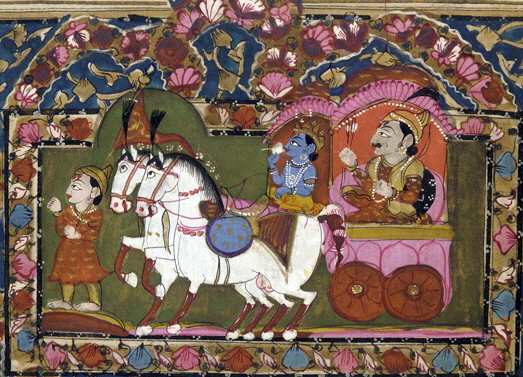
Doomsday Events
Since life began on Earth, several major mass extinctions have significantly exceeded the background extinction rate. The most recent, Cretaceous–Tertiary extinction event, which occurred approximately 65.5 million years ago (Ma), was a large-scale mass extinction of animal and plant species in a geologically short period of time. In the past 540 million years there have been five major events when over 50% of animal species died. There probably were mass extinctions in the Archean and Proterozoic Eons, but before the Phanerozoic there were no animals with hard body parts to leave a significant fossil record.
Estimates of the number of major mass extinctions in the last 540 million years range from as few as five to more than twenty. These differences stem from the threshold chosen for describing an extinction event as “major”, and the data chosen to measure past diversity. —http://en.wikipedia.org/wiki/Extinction_event
A doomsday event is a specific, plausibly verifiable or hypothetical occurrence which has an exceptionally destructive effect on the human race. The final outcomes of doomsday events may range from a major disruption of human civilization, the extinction of humanity, the extinction of all life on the planet Earth, the destruction of the planet Earth, the annihilation of the Solar system, to the annihilation of our galaxy or even the entire universe.
Even though the term “doomsday” is taken from Christian eschatology referring to the Last Judgment, the term “doomsday event” as used here refers to alleged realistic dangers from natural or man-made causes, to be distinguished from catastrophic events in religious eschatology understood as an act of divine retribution or unalterable fate.
Doomsday events may include, but are not limited to these:
Natural occurrences, including:
- A sudden change in the physical constants governing the universe, such as that created by a vacuum metastability event.
- A close approach of a black hole to the solar system.
- A gamma ray burst or other devastating blast of cosmic radiation. One especially deadly hypothesized source is a hypernova, produced when a hypergiant star explodes and then collapses, sending vast amounts of radiation sweeping across hundreds of lightyears. Hypernovas have never been observed; however, a hypernova may have been the cause of the Ordovician–Silurian extinction events. The nearest hypergiant is Eta Carinae, approximately 8,000 light-years distant.
- A drastic and unusual decrease or increase in Sun’s power output; a solar superstorm leading to partial or complete electrical or technological death of human civilization. (See solar flare.)
- Abrupt geomagnetic reversal and/or drastic decrease of magnetic field of the planet Earth. Consequences can be the same as in the cases of cosmic radiation or solar radiation blasts.
- The solar system passing through a cosmic dust cloud, leading to a severe global climate change.
- An abrupt repositioning of Earth rotation axis.[6] It could be caused by extremely powerful internal geological or/and external cosmic factors. If it happens abruptly (and not slowly within a very prolonged interval of time) it will generate enormous multiple earthquakes, multiple volcano eruptions, a hypercane or multiple megacyclones, giant tidal waves and megatsunamis all around the globe.
- An impact event causing a collision (or extremely close passage) of a large meteorite, asteroid or comet. A common theory postulates that the extinction of the dinosaurs occurred approximately 65 million years ago as a result of the Cretaceous–Tertiary extinction event when a large asteroid struck the earth, producing atmospheric dust which blocked solar energy and caused a significant lowering of temperatures worldwide (“nuclear winter”). Evidence for this theory includes a sedimentary layer of iridium in the geological record and a large crater in the area of Chicxulub, Mexico. The Tunguska event (1908) was on a much smaller scale. In the case of a close passage of an object (a large asteroid, comet or planet) with a significant gravitational impact on Earth, the consequences could be the same as in the case of an abrupt repositioning of Earth rotation axis. And such a repositioning of the axis would not necessarily have to take place for the earth to see the same global effects.
- A geological event such as massive flood basalt, volcanism, or the eruption of a supervolcano leading to the so called Volcanic Winter (Similar to a Nuclear Winter). One such event, the Toba Eruption, occurred in Indonesia about 71,500 years ago. According to the Toba catastrophe theory, the event may have reduced human populations to only a few tens of thousands of individuals. Yellowstone Caldera is another such supervolcano, having undergone 142 or more caldera-forming eruptions in the past 17 million years. Massive volcano eruption(s) will produce extraordinary intake of volcanic dust, toxic and greenhouse gases into the atmosphere with serious effects on global climate (towards extreme global cooling (nuclear winter when in short term and ice age when in long term) or global warming (if greenhouse gases prevail)).
- An exceptionally devastating hypercane probably combined with global dust storm, taking up to the atmosphere enormous quantities of dust.
- A global pandemic (assuming that the causing agent of the pandemic would have a natural origin) with very high or even 100% mortality rate.
Manmade events, including:
- A global pandemic with very high or even 100% mortality rate caused by a human-made infectious agent, which could be released among population on purpose. The source could be an individual, a laboratory workers group, a terrorist group, governmental or international organization.
- A nuclear, chemical, or biological war. A “softer” and “stealthier” case of each of these three types of warfare could be nuclear, chemical, or biological terrorism. Again the source could be an individual, a laboratory workers group, a terrorist group, religious zealots, governmental or international organization.
- A grey goo scenario, in which self-replicating machines (often imagined to be nanomachines) get out of control and indiscriminately consume all kinds of matter in the process of building more replicas of themselves, eventually making earth inhospitable for biological life altogether. —http://en.wikipedia.org/wiki/Doomsday_event
For an interesting list of ways the Earth could be destroyed, see Discover Magazine’s “20 Ways the World Could End” — although it doesn’t even mention one of the most likely ways, nuclear power plant accidents.
The very interesting academic paper, Echoes of Ancient Cataclysms in the Baltic Sea, by Ain Haas, Andres Peekna, Robert E. Walker, is well worth a read.
Ultimately, conditions will deteriorate to the point of a “sword-interval,” in which swords appear in the hands of all human beings, and they hunt one another like game. A few people, however, will take shelter in the wilderness to escape the carnage, and when the slaughter is over, they will come out of hiding and resolve to take up a life of skillful and virtuous action again. With the recovery of virtue, the human life span will gradually increase again until it reaches 80,000 years, with people attaining sexual maturity at 500. —http://en.wikipedia.org/wiki/Buddhist_eschatology
Contemporary Hindu eschatology is linked in the Vaishnavite tradition to the figure of Kalki, or the tenth and last Avatar of Vishnu before the age draws to a close, and Shiva dissolves and Brahma regenerates the universe.
Most Hindus acknowledge as part of their cosmology that we are living in the Kali Yuga, the last of four periods (Yuga) that make up the current age. Each period has seen a successive degeneration in the moral order and character of human beings, to the point that in the Kali Yuga where quarrel and hypocrisy are prevalent. Often, the invocation of Kali Yuga denotes a certain helplessness in the face of the horrors and suffering of the human condition and a nostalgia for a golden past or a future salvation.
However, Hindu conceptions of time, like those found in other non-Western traditions, is cyclical in that one age may end but another will always begin. As such, the cycle of birth, growth, decay, death, and renewal at the individual level finds its echo in the cosmic order of all things, yet affected by the vagaries of the comings and goings of divine interventions in the Vaishnavite belief.
The Four Yugas
A Divya Yuga comprises four yuga’s and lasts for 4.3 billion years (close approximation to earth’s age Age of Earth of 4.54 billion years. One cycle of these four yugas complete the existence of the universe and the universe starts to contract backwards in time followed by a new beginning of big bang. Yuga Dharma is a self-realization in each yuga.KRUTHA YUGA (SATYA YUGA) lasts 1.632 billion years. (Human beings as heavenly bodies)
TRETA YUGA silver age lasts 1.3 billion years.
DWAPARA YUGA Bronze Age lasts 884 million years.
KALI YUGA Iron Age of hypocrisy and quarrel lasts approximately 448 million years. (Lord Krishna’s Avatar – KALKI) —http://en.wikipedia.org/wiki/Hindu_eschatology
The End of the Early Bronze Age
The Old Kingdom in Egypt, the period when the pyramids were built, a great and splendid age, came to its end in a natural disaster. “At the conclusion of the Sixth Dynasty . . . Egypt is suddenly blotted out from our sight as if some great catastrophe had overwhelmed it.” (1) The second city of Troy came to an end at the same time the Old Kingdom of Egypt fell; it was destroyed in a violent paroxysm of nature. The Early Bronze Age was simultaneously terminated in all the countries of the ancient East —a vast catastrophe spread ruin from Troy to the Valley of the Nile. This fact has been extensively documented by Claude F. A. Schaeffer, professor at College de France, excavator of Ras Shamra (Ugarit).Schaeffer observed at Ras Shamra on the Syrian coast clear signs of great destruction that pointed to violent earthquakes and tidal waves, and other signs of a natural disaster. Among the greatest of these took place at the end of the Old Kingdom in Egypt. At the occasion of his visit to Troy, then under excavation by Carl Blegen, he became aware that Troy, too, had been repeatedly destroyed by natural catastrophes at the same times when Ras Shamra was destroyed. The distance from the Dardanelles near which the mound of Troy lies to Ras Shamra in Syria is about 600 miles on a straight line. In modern annals of seismology no earthquake is known to have occurred covering an area of such an extent. He then compared the findings of these two places with signs of earthquakes in numerous other localities of the ancient East. After painstaking work he came to the conclusion that more than once in historical times the entire region had been shaken by prodigious earthquakes. As to the destruction that ended the Early Bronze Age, Schaeffer wrote, “There is not for us the slightest doubt that the conflagration of Troy II corresponds to the catastrophe that made an end to the habitations of the Early Bronze Age of Alaca Huyuk, of Alisar, of Tarsus, of Tepe Hissar [in Asia Minor], and to the catastrophe that burned ancient Ugarit (II) in Syria, the city of Byblos that flourished under the Old Kingdom of Egypt, the contemporaneous cities of Palestine, and that was among the causes that terminated the Old Kingdom of Egypt.(2)
In the same catastrophe were destroyed the civilizations of Mesopotamia and Cyprus. What caused “the disappearance of so many cities and the upheaval of an entire civilization” ?(3) “It was an all-encompassing catastrophe. Ethnic migrations were, no doubt, the consequence of the manifestation of nature. The initial and real causes must be looked for in some cataclysm over which man had no control.” (4) Everywhere it was simultaneous and sudden.
The shortcoming in Schaeffer’s work was in not making the logical deduction that if catastrophes of such dimensions took place in historical times, there must be references to them in ancient literary sources. If a cataclysm terminated the Early Bronze Age, decimated the population, but left also survivors, then some memory of the events must have also found its way to be preserved in writing—if not by survivors, turned to vagrancy and having to take care for the first necessities of life, then by the descendants of the survivors.
In my scheme the end of the Early Bronze Age or Old Kingdom in Egypt is the time of the momentous events connected with the story of the patriarch Abraham, and described in the Book of Genesis as the overturning of the plain.(5) The cause of the catastrophe could not have been entirely unknown to the ancients. We must therefore become attentive also to other traditions connected with these events. —http://www.varchive.org/itb/bronzage.htm:
References
1. G. A. Wainwright, The Journal of Egyptian Archaeology 16 (1930), p. 43.
2. Claude F. A. Schaeffer, Stratigraphie comparee et chronologie de l’Asie Occidentale (IIIe et IIe millennaires) (Oxford University Press, 1948), p. 225.
3. R. de Vaux, “Palestine in the Early Bronze Age,” The Cambridge Ancient History, Third ed., vol. I, pt. 2 (1971), ch. xv, p. 236. [According to J. Mellaart (“The Catastrophe at the End of the Eartly Bronze Age 2 Period,” The Cambridge Ancient History third ed. [1971], Vol. I, pt. 2, p. 406) in the period after the catastrophe the number of settlements “is reduced to a quarter of the number in the previous period.” Jacques Courtois, reporting the results of a survey in the valley of the Orontes, writes of the “extreme density of habitation of the plain in the Bronze Age, and particularly in the Early Bronze Age.” (Syria, 50 [1973], p. 99). In eastern Arabia “a sharp downturn in settlements and activity becomes apparent” after ca. 2000 B.C. (Michael Rice, “The States of Archaeology in Eastern Arabia and the Persian Gulf,” Asian Affairs, 64 [1977], p. 143). According to Kathleen Kenyon, “The final end of the Early Bronze Age civilization came with catastrophic completeness . . . Jericho . . . was probably completely destroyed. . . . Every town in Palestine that has so far been investigated shows the same break. . . . All traces of the Early Bronze Age civilization disappeared.” (Archaeology in the Holy Land [London, 1960], p. 134). According to Ernest Wright, “one of the most striking facts about the Early Bronze civilization is its destruction, one so violent that scarcely a vestige of it survived. We do not know when the event took place; we only know that there is not an Early Bronze Age city excavated or explored in all Palestine which does not have a gap in its occupation between Early Bronze Age III and the Middle Bronze Age. To date this gap, we know that it must be approximately contemporary with a similar period in Egypt called the ‘First Intermediate Period’ between dynasties VI and XI (ca. 22nd and 21st centuries B.C.).” (“The Archaeology of Palestine” in The Bible and the Ancient Near East, Essays in Honor of William Foxwell Albright [1961], p. 103).The destruction can be traced also in Greece. “The destruction of the Early Helladic II town at Lerna in the eastern Peloponnese” is an example of “the widespread and violent destruction that occurred ca. 2300 B.C. in the Aegean and East Mediterranean” (Marija Gimbutas, “The Destruction of the Aegean and East Mediterranean Urban Civilization around 2300 B.C.,” Bronze Age Migrations in the Aegean, ed. by R. A. Crossland and Ann Birchall [London, 1973], pp. 129f.) For Lerna, see also J. Caskey, “The Early Helladic Period in the Argolid,” Hesperia 29 (1960), pp. 289-290. “The burning of the House of Tiles . . . was the end of an era at Lerna.” The settlement “came to a violent end.” Not only Lerna, but also “the tiled buildings at Tiryns and Asine were destroyed by fire.”
It is quite probable that the end of the Third Dynasty of Ur occurred at the same time. Thorkild Jacobsen wonders about “the reasons for the dire catastrophes that befell the city of Ur in the reign of Ibbi-Suen, the sudden collapse of its great empire, and the later utter destruction of the city itself at the hands of barbarian invaders. . . . How an empire like that of the Third Dynasty of Ur . . . could so quickly collapse is really quite puzzling.” (“The Reign of Ibbi-Suen,” The Journal of Cuneiform Studies 7 (1953), p. 36. Although Jacobsen refers to the text known as “Lamentation over the Destruction of Ur,” he does not treat it seriously. Yet this poem provides specific information about the causes of the disaster. It speaks of a “storm’s cyclone-like destruction” (99), of a “storm that annihilates the land” (178), “in front of the storm fires burned; the people groan” (188). It tells of the sun being obscured: “In the land the bright sun rose not, like the evening star it shone” (191). It describes earthquakes that shook the land: “the destructive storm makes the land tremble and quake” (199). “In all the streets, where they were wont to promenade, dead bodies were lying about” (217). “Mothers and fathers who did not leave their houses were overcome by fire; the young lying on their mothers’ laps like fish were carried off by the waters” (228-229). The city, prostrated by the storm “which overwhelmed the living creatures of heaven and earth,” fell prey to hostile tribes and was looted. See S. N. Kramer, “Lamentation over the Destruction of Ur,” Ancient Near Eastern Texts Relating to the Old Testament (Princeton, 1950). Another lament, Oh, Angry Sea, transl. by R. Kutscher (Yale University Press, 1975), tells of the destruction of Ur, Larsa, Nippur, Sippar, Babylon and Isin by inundations sent by Enlil. I consider Enlil to be Jupiter.].
4. Schaeffer, Stratigraphie comparee, p. 537. In Alaca Huyuk there are unequivocal signs that an earthquake was responsible for the destruction (pp. 296f.). Cf. B. Bell, “The Dark Ages in Ancient History,” American Journal of Archaeology 75 (1971).
5. [The archaeological evidence uncovered in recent years strongly supports the conclusion that the cities of the plain flourished during the Early Bronze Age and that their destruction took place at the end of this period, more specifically at the end of EB III. See H. Shanks, “Have Sodom and Gomorrah Been Found?” Biblical Archaeology Review VI:5 (Sept./Oct. 1980), p. 28. Cf. D. Cardona, “Jupiter—God of Abraham (Part III),” KRONOS Vol. VIII.1 (1982), pp. 69ff.]
Also see my posts on the Deluge: Noah and the Deluge and The Sumerian Noah Built an Ark.
